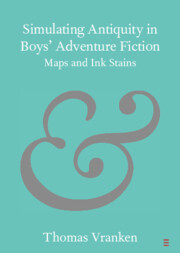Element contents
Simulating Antiquity in Boys' Adventure Fiction
Published online by Cambridge University Press: 04 August 2022
Summary
- Type
- Element
- Information
- Online ISBN: 9781009158930Publisher: Cambridge University PressPrint publication: 25 August 2022
References
- 1
- Cited by



